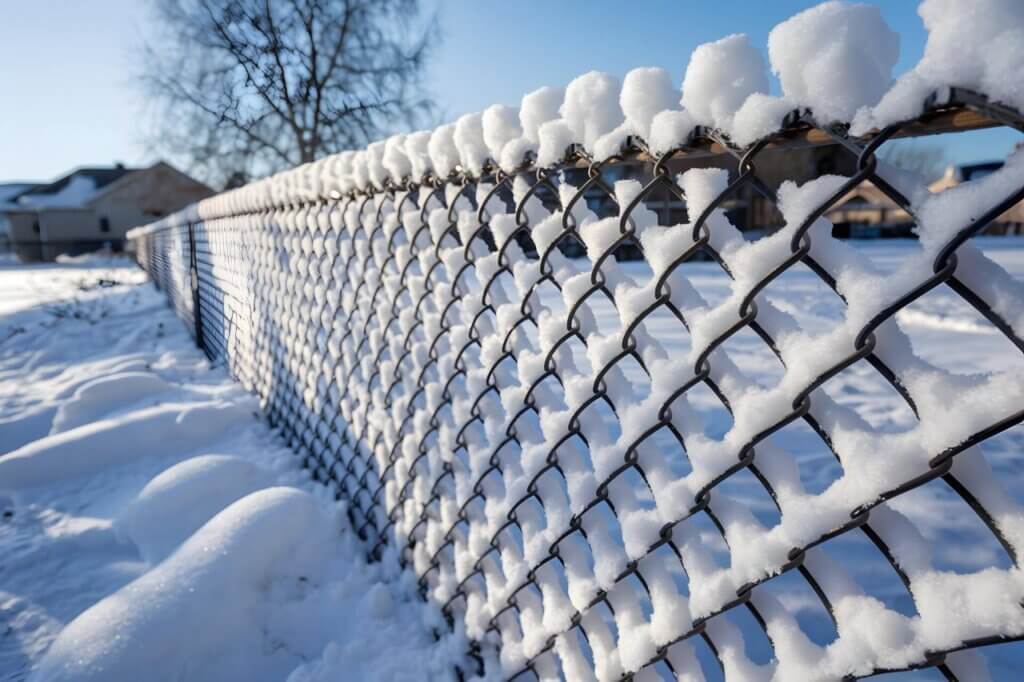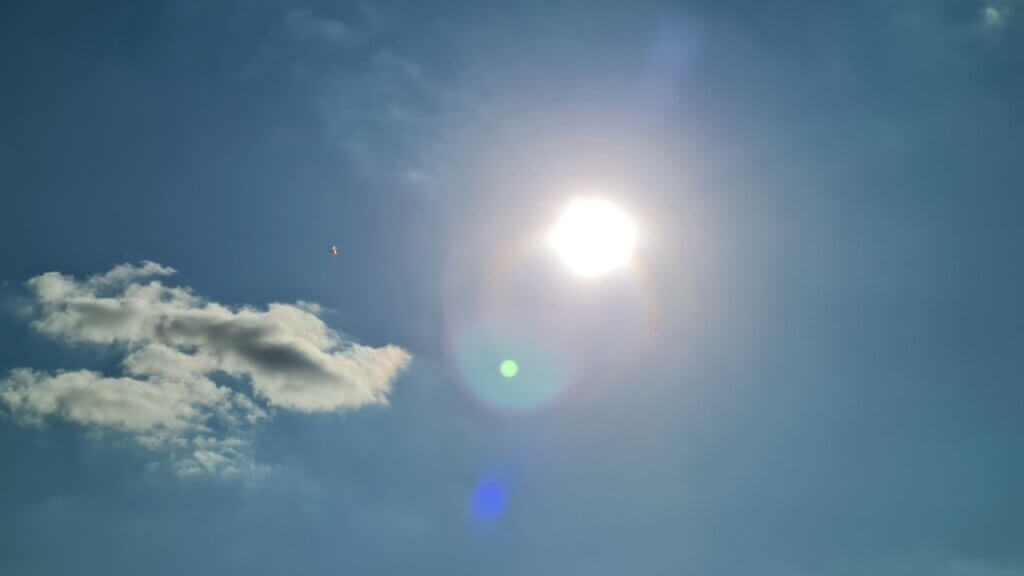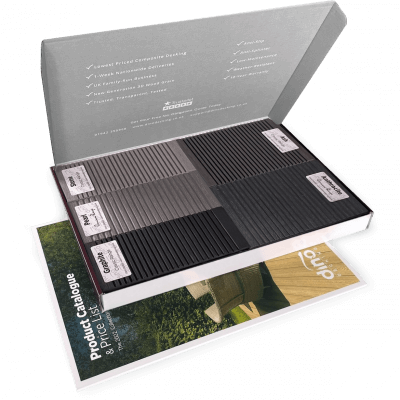5 Composite Decking Lighting Ideas
Our composite decking looks great in any setting, but you can really make your outdoor spaces shine with our decking
Products in Stock
Lowest Prices
Express Delivery
10-Year Warranty
Early April Sale. Up To 15% Off.

Fences take a beating from the elements year after year. Whether you’ve just installed new fencing or you’re weighing up your options, knowing how the environment impacts different materials can save you headaches down the line. Here’s what your fence is up against and how to prepare for it.
British weather isn’t just a talking point here, it’s genuinely your fence’s biggest adversary. Different regions across the UK throw unique challenges at fencing materials:
Temperature swings force fencing materials to expand and contract. Over time, this movement leads to warping and splitting in wooden fences, while metal can become brittle in the cold. Ever noticed how fence gates sometimes stick in winter but swing freely in summer? That’s temperature at work.
Damp British air is particularly tough on wooden fencing. In high-humidity areas, wooden posts soak up moisture, creating perfect conditions for rot and mould. Left unchecked, this can weaken your fence from the inside out. Our maintenance guide for your home’s fencing covers specific steps to protect against moisture damage.
Heavy rainfall and flooding hit fencing hard. Water that pools around posts speeds up rot in wooden structures and rust in metal parts. Even concrete posts suffer when water freezes and thaws repeatedly in the cracks.
Snow piling up on fence panels adds significant weight, causing sagging and leaning. The real trouble starts when that snow melts and refreezes, expanding in tiny cracks and gradually forcing them wider.
Fence panels act like sails in strong winds. A poorly anchored fence won’t stand a chance in serious storms—posts can be yanked from the ground or panels snapped clean off. Taller fences catch more wind and need extra-sturdy installation.
What’s happening below your fence matters just as much as what’s happening above it.
Is your once-straight fence developing a lean? Soil washing away from posts might be the problem. This happens often on slopes or in areas with poor drainage, where rain gradually carries away the supporting soil.
Your soil type affects fence stability more than you might think. Clay expands when wet and shrinks when dry, potentially shifting posts with each cycle. Sandy soil drains well but might not grip posts tightly enough. Knowing what you’re working with helps determine how deep to set posts and how much concrete to use.
High water tables spell trouble for fencing, especially wooden posts. If groundwater sits near the surface on your property, expect faster deterioration of wood. Metal or concrete post systems typically last longer in these wet conditions.
Several other environmental factors influence how long your fence will last.

Even with our modest British sunshine, UV rays gradually break down fencing materials. Wood fades and develops surface cracks, while some vinyl becomes brittle after years in the sun. A fresh coat of protective finish every few years makes a massive difference.
Living near the coast? Salt in the air speeds up corrosion of metal fittings and breaks down wood and concrete over time. Homes near the sea often fare better with composite fencing that stands up to salt spray. You can view more options here for materials that handle coastal conditions.
That ivy growing through your fence panels might look picturesque, but it’s doing no favours for the fence itself. Plants trap moisture against fencing and add weight, while roots from nearby trees can disturb posts. A bit of regular trimming goes a long way.
From woodpeckers hammering at posts to foxes digging along the fence line, wildlife can damage fencing surprisingly quickly. Different materials offer varying resistance—treated timber and composite generally hold up better than untreated wood.
Match your fencing material to local conditions for best results. In damp areas, cedar, redwood or composite resist moisture damage better than other woods. Near the coast, vinyl, composite or aluminium outperform wood and iron. Areas with big temperature swings do well with vinyl or composite that handle expansion and contraction without warping.
Smart maintenance keeps replacement costs at bay:
Check your fence twice yearly—spring and autumn work best. Look for wobbly posts, soft spots, rust patches, and changing ground levels around posts. Spotting problems early means simpler fixes.
Wooden fences need sealing or staining every 2-3 years. Metal fencing benefits from rust-inhibiting paint. Even so-called “maintenance-free” materials perform better with occasional cleaning to prevent mould.
Many problems start with poor installation. Make sure posts go below the frost line, use the right concrete mix, and add drainage gravel at the base of posts. Professional installation often pays for itself through added years of service.
Sometimes small adjustments make a big difference. French drains near fencing in wet spots or windbreak plantings for exposed fences can add years to fence life without much effort or expense.
Your fence is a significant investment in your property. Understanding what it’s up against and taking steps to protect it will keep it standing strong for years. And there’s really no perfect fence for every situation—the best choice matches both your style preferences and local conditions. But like everything, a bit of planning now saves a lot of hassle later.

Our sample pack contains a sample piece of each colour currently available. Order your free sample pack today to compare the colours and get a true feeling of the Dino Decking range!
Our composite decking looks great in any setting, but you can really make your outdoor spaces shine with our decking
If the idea of having rats under your decking makes you shiver, don’t worry. We’ll let you know the signs
Business hours
Monday: 09:00 – 17:30
Tuesday: 09:00 – 17:30
Wednesday: 09:00 – 17:30
Thursday: 09:00 – 17:30
Friday: 09:00 – 17:30
Saturday: Closed
Sunday: Closed
Contact us
01942 355968
support@dino.co.uk
Collection Address: Unit 1 Wetheral Close Hindley Ind Estate Wigan Greater Manchester North West WN2 4HS
Pages
Products
Testing
Copyright 2025 Dino Decking Ltd All Rights Reserved.
VAT Number: GB296097848.
Company Number: 10837233.